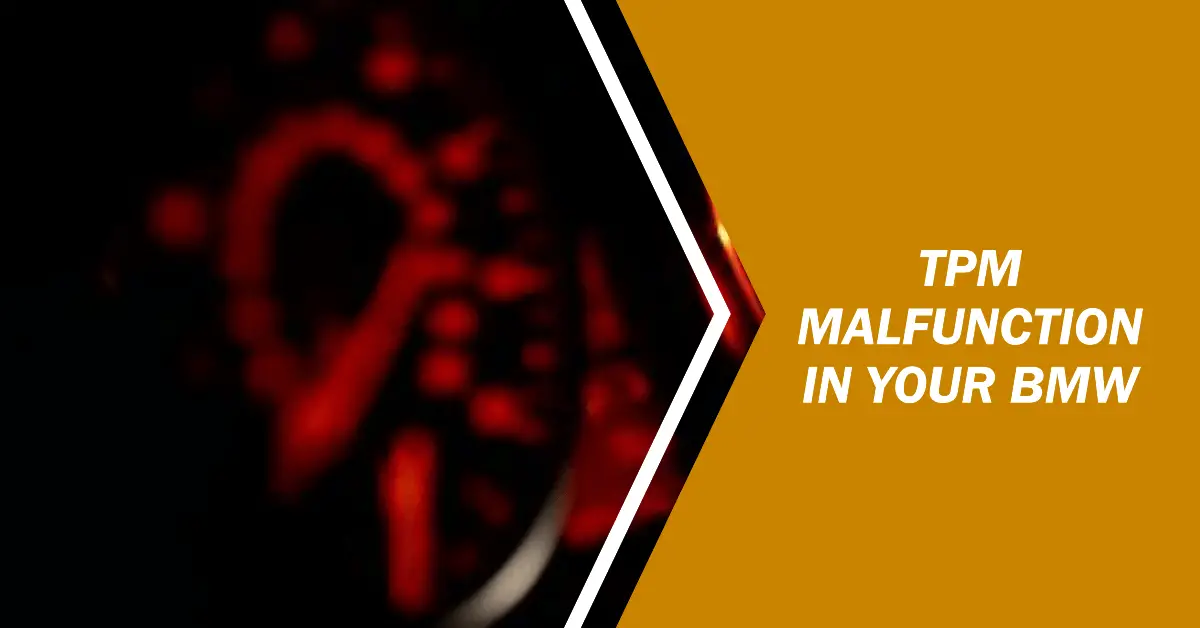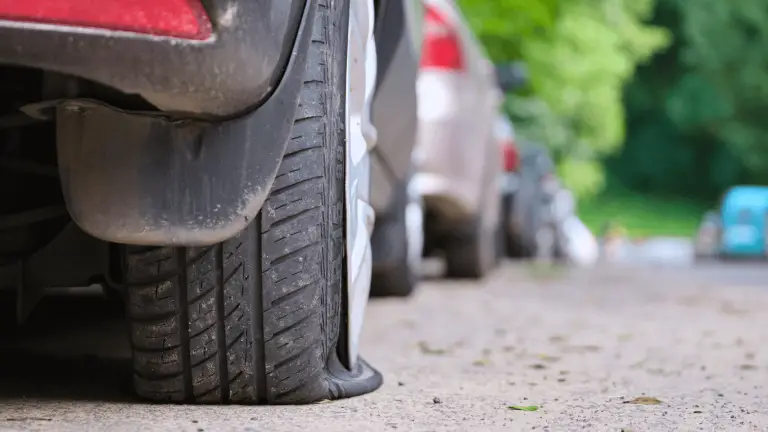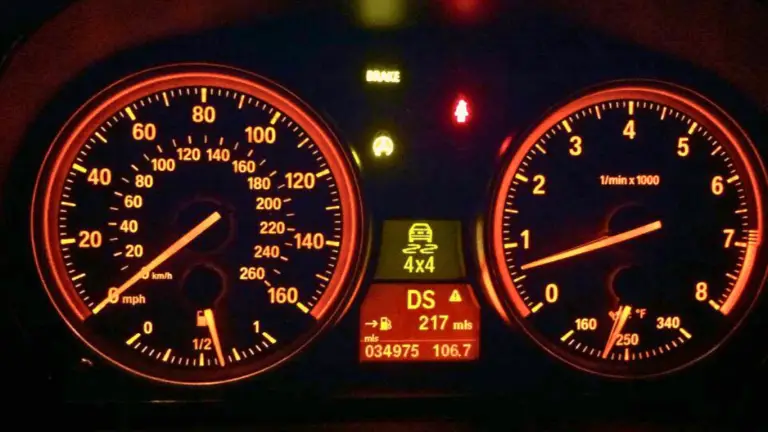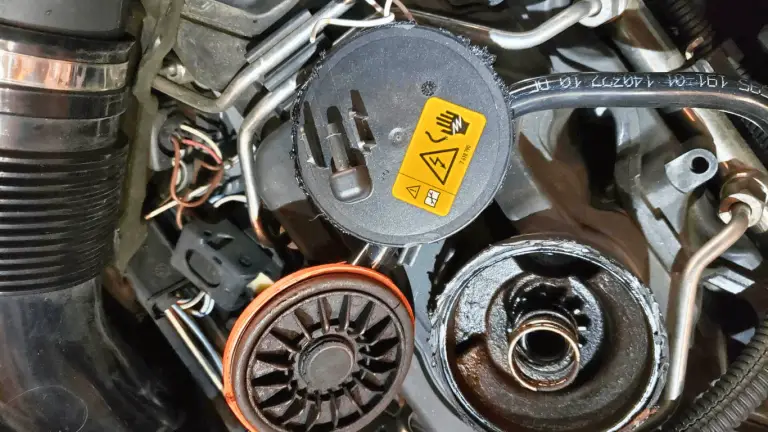BMW TPM Malfunction: Symptoms, Causes & Fixes
Finding your BMW displaying tire pressure warnings or fault codes related to the Tire Pressure Monitoring (TPM) system can be frustrating. But don’t worry – with the right knowledge, you can diagnose and fix many BMW TPM malfunctions yourself.
This detailed guide will cover everything you need to know about BMW TPM problems including:
- What is the TPM system in BMWs and how does it work?
- Common symptoms that indicate TPM failure
- Potential causes of BMW TPM malfunctions
- Step-by-step instructions for diagnosing TPM issues
- DIY fixes and repairs for faulty TPM components
- Professional BMW TPM repair options
- Costs of fixing BMW TPM problems
- Tips for preventing future TPM failures
- BMW TPM reset and relearn procedures
- Frequently asked questions about TPM malfunctions
So what exactly causes the TPM system in a BMW to malfunction and display errors? Most commonly, the problem stems from a failed or dead TPM sensor battery, a bad sensor, or electrical interference. By the end of this guide, you’ll understand the various causes and be equipped to get your BMW’s TPM working properly again.
What is the Tire Pressure Monitoring System in BMWs?
Before diving into the specifics of BMW TPM problems, it helps to understand what the Tire Pressure Monitoring System is and how it works.
The TPM system is designed to monitor the air pressure inside your BMW’s tires and alert you if any of them become significantly under-inflated.
Each wheel contains a TPM sensor mounted inside the wheel well. These sensors contain batteries, pressure-sensing mechanisms, and wireless transmitters.
The sensors constantly monitor tire pressure and transmit this data via a radio frequency signal to the TPM control module. The control module analyzes the pressure signals from each wheel sensor and compares it to pre-set thresholds.
If pressure in any tire drops 25% or more below the correct inflation level, the TPM control module will illuminate the TPM warning light on your dashboard to alert you to the problem. It can also display exact pressure readings from each tire on the vehicle’s information display.
Maintaining proper inflation is critical for tires to operate safely and efficiently. Under-inflated tires can cause handling problems, reduced fuel economy, irregular wear, and increase the chance of blowouts or flats. The TPM system aims to identify any significant pressure loss early on, so you can address it promptly.
Now that you understand the TPM basics, let’s look at the typical symptoms of a malfunctioning system.
Symptoms of BMW TPM Malfunction
The most common indications that something is wrong with your BMW’s TPM system include:
1. TPM Warning Light Stays On
If the yellow or orange TPM warning light on your BMW’s instrument panel remains illuminated, it means the system has detected a tire with low pressure.
This is the primary symptom of TPM issues. But on its own, it doesn’t reveal the underlying problem. There could be an actually under-inflated tire, or a false warning caused by a bad sensor or interference.
2. Incorrect Tire Pressure Readings
BMW’s TPM system is capable of displaying exact pressure readings for each tire on the vehicle’s information display.
So if you notice implausible or erroneous tire pressure values, it points to a problem with the sensors or control module. One reading may show significantly lower or higher than the rest. Or the displayed values may be completely inaccurate when checked against a tire pressure gauge.
3. TPM Sensor Fault Message
Some BMW models can provide specific fault messages related to the TPM sensors, such as:
- Check TPM Sensors
- TPM Sensor Malfunction
- TPM Sensor Signal Loss
These messages indicate the control module is no longer receiving valid data from one or more wheel sensors, prompting an error.
What Causes TPM Failure in BMWs?
If you encounter the symptoms above, what are the possible culprits leading to BMW TPM malfunction? Here are the most prevalent causes:
Dead or Low Battery in TPM Sensor
The batteries inside the TPM sensors have a limited lifespan. Most last around 5-7 years before needing replacement. Once the battery dies, the sensor can no longer transmit pressure data, generating errors.
A weak battery can also cause intermittent TPM problems as the signal fades in and out.
Failed TPM Sensor
Beyond just a depleted battery, the electronic components within the TPM sensors themselves can malfunction. Problems with the pressure-sensing mechanism, circuitry, or transmitter can prevent proper operation. Faulty sensors must be replaced.
Faulty TPM Control Module
The central control module analyzes and processes data from each wheel sensor. If its electronic circuitry gets damaged, it can cause widespread TPM issues. A faulty control module will need professional diagnosis and repair.
Interference Causing Signal Loss
The TPM sensors transmit data wirelessly to the control module via radio frequency signals. External interference from other devices can disrupt this communication and lead to signal loss.
Sources of RF interference include:
- Aftermarket electronics like lighting or audio systems
- Mobile devices transmitting in close proximity
- Certain metallic window tints or coatings
This interference prevents the control module from receiving tire data, triggering TPM errors. Eliminating the source of interference is key to resolving these types of issues.
Now that you know why BMW TPM failure happens, it’s time to diagnose exactly where the problem lies in your vehicle.
How to Diagnose BMW TPM Problems?
When your BMW has a TPM malfunction, follow these steps to properly diagnose the cause:
1. Use a BMW Scan Tool to Pull TPM Fault Codes
The best way to get insight into TPM issues is by connecting a BMW-compatible scan tool and checking for diagnostic trouble codes (DTCs) stored in the system.
Scan tools like Carly, Bimscanner, or BMW INPA can read BMW-specific TPM codes that point to sensor faults or signal loss. The codes indicate which sensor is having trouble (front left, front right, etc) to zero in on the problem area.
2. Check Tire Pressures with a Gauge
With the car parked for 3+ hours, use a quality tire pressure gauge at each wheel to check if the displayed TPM pressure readings are accurate or not.
This can confirm if there’s an actually under-inflated tire triggering the warning, versus a false alarm. Cross-check the gauge reading against what the TPM monitor shows for each tire.
3. Visually Inspect Sensors and Wiring
Remove the wheels and visually examine each TPM sensor inside the wheel wells. Look for external damage, cracked housings, or disconnected wiring.
Inspect where the sensors connect to the vehicle’s wiring harness for signs of damage or corrosion. Faulty wiring can cause intermittent connection issues.
Thorough diagnosis should reveal the specific TPM component – whether sensor, control module, or wiring – responsible for the malfunction. This leads into the available solutions for restoring proper function.
Fixing BMW TPM Malfunction
Here are the DIY fixes and repairs to address common TPM problems based on the diagnosed cause:
1. Replace Dead or Low TPM Sensor Battery
If a dead sensor battery triggered the issue, replace it with a new CR1632 coin cell battery. The process involves prying off the sensor, removing the old battery, installing the replacement, and syncing the sensor. Our in-depth TPM sensor battery replacement guide walks through the steps.
2. Replace Failed TPM Sensor
For a sensor that’s completely dysfunctional beyond just a dead battery, you’ll need a full replacement sensor. Ensure you order the correct wheel-specific sensor for your BMW model. Installation into the wheel is straightforward with tire removal. Sync the new sensor so the TPM module recognizes it.
3. Reprogram or Replace Faulty TPM Module
If diagnosis indicates an issue with the control module itself, it will require professional service. A BMW specialist can attempt to reprogram and update the module’s firmware, which may resolve glitches. But a totally failed module needs replacement.
4. Eliminate Sources of Interference
For TPM issues caused by signal interference, inspect the car for potential sources. Have amplifiers and electronics installed nearby been worked on recently? Try temporarily disconnecting or moving devices to see if it restores operation. Adding radio frequency shielding can also help block external interference from causing malfunctions.
In many cases, DIY fixes are possible for BMW TPM problems. But for control module, wiring, and some sensor issues, seeking professional BMW service may be required.
BMW TPM Reset & Relearn Procedure
Once you complete any TPM repairs or replacements, a reset and relearn procedure is required to reinitialize the system. This syncs the newly installed or changed components. Here is the BMW TPM reset process:
- Turn ignition to the ON position without starting engine
- Press the TPM RESET button and hold for ~10 seconds until the warning light blinks
- Start the engine and let it idle
- After ~20 minutes of idling, the TPM warning light will turn off indicating the reset is complete
- Drive a short distance to allow the module to relearn all sensor positions and complete programming
Following these steps resets all stored TPM error codes and essentially reboots the system after repairs. The control module relearns the sensor signals. Refer to BMW service bulletins for proper reset procedures for your model’s production year.
Cost to Fix BMW TPM Malfunction
What’s the typical cost for BMW TPM repairs? Here are average estimates for parts and labor:
- TPM sensor battery replacement – $50-$150 for parts plus 1-2 hours labor
- TPM sensor replacement – $75-$200 for the part per wheel plus 1-2 hours labor
- TPM control module repair – $500-$1500 including programming labor
- Full TPM system replacement – Up to $1000 in parts, 6+ hours labor
Labor costs vary by location and shop rates. Diagnosis time also adds cost to identify bad components. Having a BMW specialty shop complete repairs generally offers significant savings compared to dealer rates.
Properly maintaining your TPM system is key to avoiding costly repairs down the road.
Preventing Future BMW TPM Problems
You can take proactive steps to minimize TPM issues in your BMW:
- Extend TPM sensor battery life – Avoid frequently exposing the sensors to high-pressure washers or steam. This can damage their waterproof seals and shorten battery lifespan.
- Check tire pressures regularly – Run your hand around the inside of each tire once a month feeling for punctures or low spots indicating under-inflation. Use a gauge to check pressure and inflate tires as needed. This prevents excess strain on the TPM system.
- Perform TPM system resets – When rotating tires or changing wheels, make sure to perform the TPM reset procedure so the control module relearns the sensor positions.
- Address TPMS issues promptly – At the first sign of problems, diagnose the cause and make any necessary repairs. Leaving malfunctions too long can lead to further TPM damage.
With careful ongoing maintenance and awareness of battery life, BMW’s TPM system can provide many years of reliable service. But at the first sign of issues, our guide will help troubleshoot and resolve the problem.
When to Seek Professional BMW TPM Repair?
For simple issues like dead sensor batteries or failed sensors, DIY repairs are achievable for most BMW owners. However, in some instances it pays to have professional service:
- If you don’t have the tools, skills, or confidence to safely complete TPM repairs yourself, the cost of paying a shop may be worthwhile.
- For control module faults, replacement, or programming, the advanced diagnostics and coding capabilities of a BMW specialist are required.
- Intermittent faults or multiple sensors malfunctioning can take expert-level troubleshooting to pinpoint the root cause.
- If you’ve followed all troubleshooting steps and are still experiencing TPM problems, a second opinion from a BMW technician can be invaluable.
Seeking professional assistance is wise in situations where your own repair attempts have been unsuccessful or the issue is complex. Plus, shops have specialized tools to efficiently handle BMW service work.
How to Find a Qualified BMW Repair Shop or Dealership?
Not all shops are created equal when it comes to BMW knowledge and capability. Finding one with demonstrated expertise is recommended.
- Search for independent BMW specialty shops in your area that car owners have given positive reviews. These usually provide dealer-quality work at better rates.
- Check that shops employ ASE certified BMW technicians with all the latest OEM tooling and software to service your model.
- For dealers, look at consumer ratings and talk to service advisors to get a feel for the department’s competency with TPM repairs.
- Ask shops about their experience with your particular issue – for example TPM sensor replacement or module programming. Consider how many similar jobs they have successfully completed.
Taking the time to find a BMW repair shop you can trust will give confidence they can capably resolve any lingering TPM problems. Leverage their expertise if your own efforts have hit a dead end.
Frequently Asked Questions About BMW TPM Malfunction
Here are answers to some common questions about BMW TPM issues:
Why does my BMW TPM light stay on?
A persistent TPM warning is most often caused by a failed sensor battery or malfunctioning sensor. It indicates the system is not receiving valid pressure data from one or more wheels. Faulty control modules or interference disrupting the sensor signals can also trigger the warning light.
How much does it cost to fix BMW TPM malfunction?
Cost varies based on the issue. Simple fixes like a new sensor battery may be $150 or less in parts and labor. Replacing sensors can run $200+ per wheel. More complex module repairs or full TPM system replacement can cost $1000+. Diagnostics adds to the cost.
Do I need to program new TPM sensors?
Yes, newly installed TPM sensors must go through an initialization and programming procedure so the control module recognizes them. This requires a reset tool and BMW scanner. Without programming, new sensors will not function properly.
Should TPM repairs be done by a dealer?
Independent BMW repair shops with advanced diagnostics capability can complete TPM servicing just as competently as the dealer, typically for less cost. Complex module programming does require specialized tools and software knowledge that dealership techs possess.
How long should BMW TPM sensors last?
Properly functioning TPM sensors can last around 8-10 years or 80,000-100,000 miles in most cases. The limiting factor is the battery life, which starts to fade after 5-7 years. Issues like extreme weather exposure can shorten sensor lifespan.
Conclusion
BMW’s Tire Pressure Monitoring System is an important feature that helps alert you to dangerous under-inflation. But like any complex electronic system, it is prone to occasional faults and failures.
The most common causes of BMW TPM malfunction include:
- Dead or depleted sensor batteries
- Damaged TPM sensors
- Electrical interference disrupting sensor signals
- Internal control module issues
By understanding the symptoms, utilizing scan tools to read diagnostic codes, and thoroughly inspecting components, you can isolate the root cause.
Simple fixes like sensor battery replacement are doable for DIYers. But it’s wise to lean on professional BMW repair shops for control module programming or difficult electrical gremlins.
Addressing TPM problems promptly, whether yourself or by a technician, ensures your BMW’s tire pressures can be monitored reliably. This prevents premature tire wear and improves road safety.
Equipped with this detailed resource, you now have the knowledge to diagnose BMW TPM issues like a pro and restore smooth, long-lasting operation. Your BMW’s tires are in good hands!







